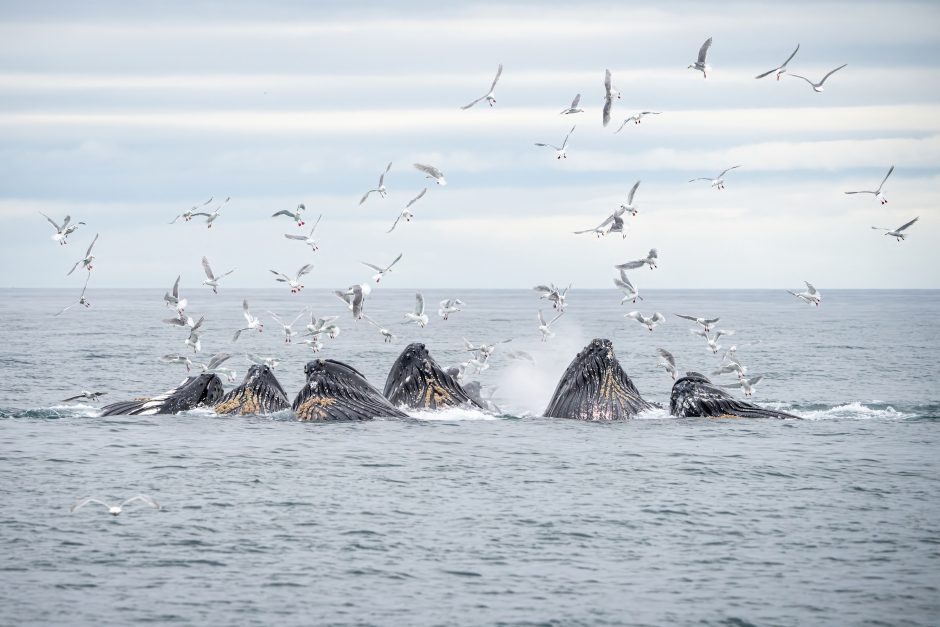
Shot Settings – Humpback Bubble-net Feeding
It’s one of those iconic animal behaviors. Humpback whales cooperating to create a spiraling “net” of bubbles to corral massive schools of fish, allowing each whale to gulp tons of food at once. Capturing this rare & unique feeding behavior can be one of the most rewarding experiences for a wildlife photographer, however, it requires a blend of timing, technique, and settings and of course you must be in the right place! Here’s a quick guide to set you up for success.
Shutter Speed – 1/3200th of a second
The action of bubble net feeding is fast, and chances are the boat is rocking in the waves too. Set your camera to a high shutter speed (1/2000 sec or likely faster) to freeze the movement and reduce motion blur. Practice by photographing birds from the boat, if you’re getting sharp shots, you likely have the right speed. Additionally, set your camera to a high frame rate for continuous shooting, which will increase your chances of capturing the perfect moment when the whales break through the surface. (If your camera shutter sounds like a machine gun, you’re taking the right amount of photos.) To further help you get a sharp shot, stand near the center of the boat where you’ll move the least as the waves rock the boat back and forth.
200-600mm lens @ 365mm
A camera with a long lens is essential if you want to capture a good shot of the action. Between whale watching regulations and the sheer size of the ocean, you likely won’t be right next to the action. A DSLR or mirrorless camera with a minimum of 300mm lens will allow you to get close-up shots from a distance.
Aperture – f/8
Adult humpback whales are BIG, about 50 feet (15m) big. This means that the action is happening over a sizable area, so a medium to wide aperture will ensure that you get most of the whales in focus.
ISO 2500
This is the last setting to change. You want to use a lower ISO setting to maintain image clarity, but be prepared to increase it if the lighting conditions are poor. This photo was taken in Alaska, where cloudy is the default, so a higher ISO was needed to accommodate my other settings. Check your exposure by photographing the birds flying by, that way you’re not messing with settings too much when the whales surface.
Predicting the Whales
All the camera settings in the world won’t mean a dang thing if you don’t know where to point your camera. When the whales break the water’s surface, it’s over quick, lasting just 5-10 seconds. You won’t have long to get yourself into position and click the shutter. Thankfully, the birds have, well, a birds-eye view so they’ll be your biggest clue as to when and where the whales will pop up next. They’re hoping to snag panicking fish that manage to escape those massive mouths. It’s helpful to work with experienced whale watchers or guides who can help you identify when a feeding event is about to begin. Keep an eye on the water’s surface for signs of bubbling and bird behavior changes, which indicate that the feeding process is starting. Stay alert and be ready to shoot as soon as you spot the birds start to flock around a specific spot in the water.
Photographing humpback whales bubble-net feeding is a challenging yet immensely rewarding photo. By understanding their behavior, using the right equipment, positioning yourself strategically, and setting your camera correctly, you can capture stunning images that showcase one of nature’s most spectacular feeding strategies. Now you just have to choose where to go to see these whales in action. Might I suggest Alaska?
Happy Photographing,

1 Comment

Tina Schreiner
August 22, 2024 at 8:04 pm
Thank you for this article! And making a complex topic easy to understand.